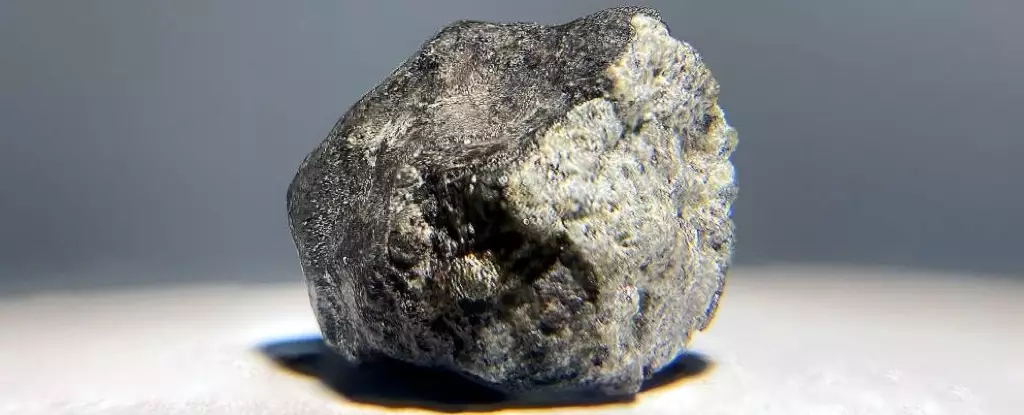For centuries, humanity has gazed at the night sky, wondering about the origins of the celestial objects that sometimes fall to Earth in the form of meteorites. Despite being historically elusive, recent research has unveiled a rich tapestry of connections between various meteorites and their astrological family members. A collection of studies, spearheaded by notable institutions like the French National Centre for Scientific Research and the European Southern Observatory, has effectively traced the origins of over 90 percent of meteorites currently cataloged on Earth. This thorough investigation not only enhances our comprehension of these mineral wonders but also offers insights into the broader history and dynamics of our Solar System.
Meteorites can be categorized into several types, with H (high iron) and L (low iron) chondrites being the most common, comprising around 70 percent of all meteorites found on Earth. The term “chondrite” derives from the small, spherical particles known as chondrules, which form when molten rock cools rapidly in space. These meteorites serve as a record of cosmic history, revealing crucial information about the composition and temperature fluctuations of the early Solar System.
The recent studies have pinpointed specific asteroid families—Massalia, Karin, and Koronis—as the primary sources of these prevalent meteorites. Nestled in the asteroid belt between Mars and Jupiter, these families have experienced significant physical upheavals that have resulted in the dispersal of their rocky remnants across space. Understanding these families and their respective histories aids in deciphering the chaotic nature of cosmic collisions.
Central to these studies is the recognition of catastrophic events that have destabilized these asteroid groups. The researchers meticulously dated notable impact events within the Massalia family, revealing collisions occurring approximately 466 million and 40 million years ago. In contrast, the Karin and Koronis families experienced more recent events about 5.8 million and 7.6 million years ago, respectively. These findings underline a pivotal aspect of our cosmic environment: the impact of time on the distribution of resources.
Supporting evidence for the shared origins of these meteorites includes pristine dust bands and the cosmic-ray exposure ages of the H chondrites. Such detailed analysis counters earlier hypotheses that speculated meteorites emanated from a more diverse range of sources. Instead, the current evidence points toward a concentrated focus on these major families and their interconnected histories.
The Dynamics of Asteroid Families and Fragmentation
Asteroid families represent dynamic systems where collision events not only fragment larger bodies into smaller pieces but also facilitate their eventual travel into Earth-crossing orbits. The studies highlighted the life cycles of asteroids, revealing how one significant collision can initiate a cascading effect. Smaller fragments created during such impacts have a higher likelihood of escaping their original orbits and becoming the meteorites we observe today.
This insight extends the narrative beyond the mere origins of meteorites; it suggests that our planet is a receiving hub for ancient cosmic materials that have undergone complex journeys through primordial space. The disruptions in these families can launch a plethora of asteroid fragments toward Earth, indicating an ongoing process of cosmic exchange that continually reshapes Earth’s geological landscape.
Broader Implications for Astronomical Research
The implications of these studies reach far beyond the attribution of meteorites. By establishing a clearer connection between meteorites and their parent bodies, astronomers can better understand the evolutionary story of our Solar System. This knowledge enhances our understanding of planetary formation, the history of solar radiation, and the nature of the universe’s building blocks.
Furthermore, researchers have expanded their focus to include less prevalent meteorite classes, such as those from the Veritas, Polana, and Eos families, thus accounting for even more of the meteorites that have miraculously traversed our atmosphere.
The groundbreaking research elucidating the connections between meteorites and their parent bodies heralds a new chapter in planetary science. As the quest for knowledge continues, scientists remain devoted to not only pinpointing the origins of these enigmatic objects but also harnessing their stories to understand the broader dynamics of our Solar System. Continued observation and exploration may soon unveil the remaining mysteries of meteorites, uncovering even more about the rich history of our planet and its celestial relatives.


Leave a Reply